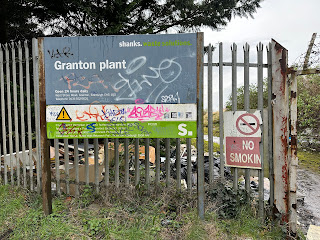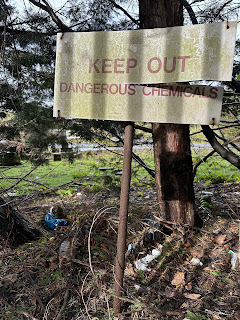On
a lonely hill in East Lothian there stands a rather phallic looking stone
tower. It dominates the skyline for
miles around, shouting out to all – ‘Look at me! Look at me!’
It is meant to remind all who see it of the valour and heroism of a long
forgotten member of the aristocracy. A
career soldier who fought in the battles against Napoleon and his ambitions of
empire, but who also fought to seize and steal land for the British Empire. A man,
who in his time was seen as being brave, daring, God fearing, and everything
that a man of his class should be. A
man, who in our time, is seen as taking part in actions on behalf of the
British Empire and his own wealth, that are morally repugnant.
The Hopetoun Monument
John
Hope, our ‘hero’ memorialised by the Hopetoun Monument, was born in 1765 and
was part of the aristocratic Hopetoun family.
He took the title of the Earl of Hopetoun when his half-brother died in
1816. John joined the army at a young
age and quickly rose to the rank of Brigadier-General. In 1794, he was in the West Indies where he
took part in various campaigns, including the brutal crushing of the slave
rebellion in Grenada. He then took part
in various battles in Europe and Egypt and served under the Duke of Wellington
at the Battle of Nivelle and the Battle of Nive. In 1814 he was severely wounded at the Battle
of Bayonne and was taken prisoner by the French. On his release, he returned to Scotland to
recuperate. His military service over,
he enjoyed the wealth from the various lands he had inherited around Scotland,
and also the wealth generated from the plantations he now owned in Granada and
Dominica. He later went on to be the
Governor of the Royal Bank of Scotland, The Lord Lieutenant of Linlithgowshire
and the Captain-general of the Royal Company of Archers. He died while in Paris in 1823, with his body
then being repatriated back to Britain and buried in the family vault at Abercorn.
At
the time of his death, John Hope was a popular man, not only amongst the great
and the good of the land, but also amongst the general population. The tenants and the farmers on his land
appeared to have held him in high regard as a good man and a good landlord. Various discussions into monuments to his
life were had, and he ended up with several.
These are, the Hopetoun Monument at Byres Hill, another Hopetoun
Monument in Fife, and then a statue of him on horseback that now sits outside Dundas
House in the New Town of Edinburgh.
Work
on the Hopetoun Monument began on the 8th of May 1824, when the
foundation stone was laid. On a day of torrential rain, a huge procession took
place up Byres Hill, a procession of ‘ladies and gentlemen’ from the
surrounding countryside, various craftsmen, and marching bands. Hordes of local people braved the terrible
weather to come and watch the event.
Then, with much pomp, the first stone of the tower was laid down on the
site.
Once
completed the tower stood ninety-five feet tall, with a hundred and thirty-two
steps spiralling up to reach the viewing platform at the top.
***
On
a cold and crisp day, I walked up the dirt path round Byres Hill that led to a
steep slope up through some woods of almost naked trees, the forest floor
carpeted in their leaves of orange and gold.
I then emerged out of the woods to a ring of gorse bushes that appeared
to encircle the tower as if they were protecting it, much like the thorn bushes
that grew around Sleeping Beauty’s castle.
Luckily for me though, there was no having to cut my way through, as the
path led me out and up to the grassy area where the tower stands.
View from the woods at
Byres Hill
The Hopetoun Monument –
through the trees
The Hopetoun Monument – through
the naked trees
The Hopetoun Monument
Walking
up to the tower I could see that the iron gate was open and inviting me to come
inside. So, in I went. A steep and narrow spiral staircase led up
and up. It made me think of another
childhood fairy tale and so I cried out ‘Rapunzel, oh Rapunzel, let down your
hair.’ Alas, there was no answer, only the eerie howl of the wind through the
window slats in the stone.
The opening to the tower
The spiral staircase
As
I made my way further up I found that on the ledges on these slats there were the
abandoned nests of some ravens, who had made the tower their home for a brief
time. From the nests of twigs and sticks
and downy feathers, they must have had a good view of the land below. By the nests the stairs became thick with
fallen sticks that crunched under my feet like the dried bones of some long
dead tiny creatures. Climbing further
up, the tower grew darker and darker. My
hands against the walls I trod carefully, the crunch, crunch of my feet
becoming louder as the light grew fainter and fainter. The dark and the screaming howl of the wind
made me feel slightly nervous about what was ahead, and I thought about turning
around and going back down. But, just as
my fear was getting the better of me, there was light. Another window slat and then as I walked up I
could see the entrance out onto the tower viewing platform. Pulling myself up on a slightly wobbly iron
handrail, I was out into the bright light of a view that stretched for miles
and miles. I could see over the whole of
East Lothian, down to the Borders, across to sea to Fife and over to Edinburgh
and beyond.

Silhouette of Byres Hill
and the tower
View over to North
Berwick, Berwick Law, and the Bass Rock
View over to Edinburgh
I
took in the view, despite the howling wind that wanted to pluck me from the
tower and throw me far, far away. Then,
finding a small hole in the tower wall, I placed a Skulferatu there before
making my way back down the narrow, winding stairs and out onto the hill.
Skulferatu #118
Skulferatu #118 in a
hole in the tower wall
Skulferatu #118 in a
hole in the tower wall
Map showing the location
of Skulferatu #118
The
coordinates for the location of the Skulferatu are –
Latitude
55.978075
Longitude
-2.801577
what3words:
squad.dusts.thrusters
I
used the following sources for information on Hopetoun Monument and John Hope –
‘The Late Earl of Hopetoun’ - The Scots
Magazine - Wednesday 1 October 1823
‘Earl of Hopetoun’s Funeral’ - Morning
Advertiser - Thursday 9 October 1823
‘Scottish Intelligence’ - The Scotsman -
Saturday 8 May 1824
The Scotsman – 28 June 2020
Canmore
Wikipedia

































































